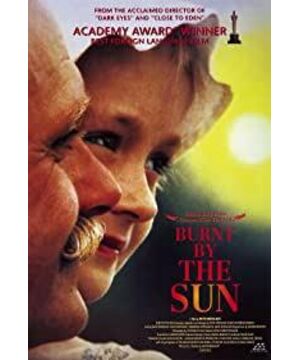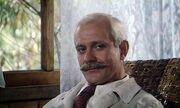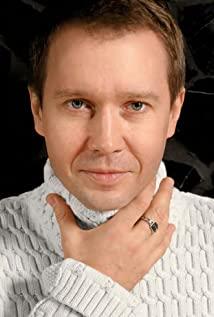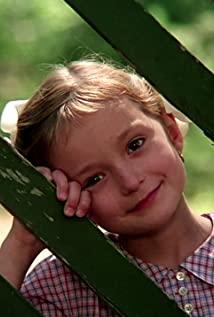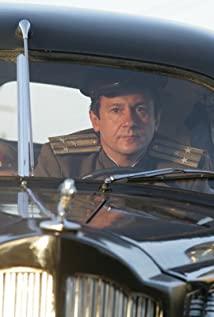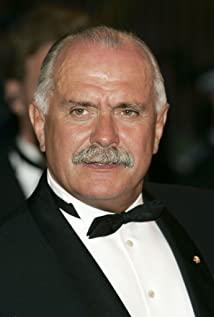In the former Soviet movie "Station for Two", which was introduced in 1986 by the West Wind alone , Nikita Mikhalkov played a conductor named Andrei, which gave mainland audiences a taste of his style as an actor for the first time. Today, Mikhalkov is a world-renowned director and is known as the Spielberg of Russia.
Mikhalkov was born in a prestigious artistic family in Moscow. His great-grandfather Vasily Surikov and grandfather Piotry Goncharovsky were both famous painters in the Tsarist period; his father Sergey Mi Kharkov is a famous poet, academician of the former Soviet Academy of Educational Sciences, the author of the Soviet national anthem and the lyrics of the new Russian national anthem; his mother is also a poet; his brother is a famous director Andrei Konchalovsky.
Under the influence of the strong cultural atmosphere of the family, Mikhalkov became obsessed with literature and image art. In 1977, the 32-year-old Mikhalkov adapted the film "Unfinished Mechanical Piano Music" (also translated "The Sound of Lost Piano") based on Chekhov's unfinished novel "Without a Father", which achieved great success. Won multiple international awards.
In 1994, Mikhalkov directed and co-starred with his daughter in "Poisonous Sun" (also translated "Scorching People") dedicated to the victims of the "Great Purge", vividly showing the tragic fate of ordinary people in the Stalin era . Once the film was released, it immediately caused a sensation in Russia and the world. He won the Oscar for Best Foreign Language Film and earned more than US$200 million in box office revenue in North America, establishing his status as a world-class director.
The "Great Purge" campaign planned and launched by Stalin opened the most terrifying and dark page in the history of the former Soviet Union: On December 1, 1934, Sergey Mi Kirov, a member of the Politburo of the Communist Party of the Soviet Union, Leningrad was assassinated by Al-Shabaab member Nikolaev. Stalin, who was deliberately trying to eliminate dissidents, finally found an excuse. A large-scale political repression and persecution campaign against innocent people and inside the CPSU kicked off. In the evening, the Central Committee of the CPSU adopted the "Resolution on Amending the Criminal Procedure Code of the Union Republics" based on Stalin's suggestion:
"In all cases involving terrorist organizations and terrorist activities against Soviet regime personnel, the investigation work cannot exceed ten days; the conclusion of the accusation shall be handed over to the defendant one day and night before the formal trial; neither the plaintiff nor the defendant will participate in the trial; the appeal of the verdict shall not be accepted. Request for pardon; the capital punishment sentence is executed immediately after it is announced."
This resolution, which was later called the "special procedure", opened the door to the system for the use of illegal means to organize crimes and persecute dissidents during the Great Purge, and became a bloodthirsty Stalin purge. Political opponents and an important tool for cruelty to innocents: Anyone who is beaten into a trick within ten days can be executed without trial.
The frenzied and murderous purges finally paved the way for the demise of the CPSU and the disintegration of the former Soviet Union. Academics have different opinions on how many innocent people were persecuted to death, exiled, and imprisoned during Stalin's administration. In 1999, the Russian scholar Ali Litwin made a summary in Historiography of the "Great Terror" Studies in Russian Academic Circles: "From the 1930s to the early 1950s, a total of 3,778,234 people were arrested, of which 786,029 were arrested. Sentenced to the death penalty", basically consistent with the statistics made by Khrushchev, Gorbachev, and Yeltsin in different periods to settle the crimes of Stalin.
Behind these cold numbers are bloody scenes of vivid lives being crazily crushed by red violent machines. The "poisonous sun" of Stalin has transformed the boundless spring world into a hell of roaring wind.
"Poisonous Sun", adapted from real historical events, puts the struggle between rivals into the background of the times, and reproduces how authoritarian tyranny releases the evil of human nature to the maximum: In the summer of 1936, the commander of the Red Army and the battle hero Kotov and His wife Marusa and her youngest daughter came to the country house for vacation. Marusa's childhood sweetheart Midiya suddenly visited, breaking the tranquility of the family.
Midya was born in a noble family that only allowed to speak French. Both parents were suppressed by the CPSU. In order to protect herself and return to Marusa as soon as possible, Midya, who was proficient in French, was forced to go to Paris and become a Cheka (KGB). The predecessor) of the secret agent. It was Marusa's husband Kotov who ordered him to leave his hometown!
Midya betrayed his class, betrayed the whereabouts of eight white generals, and was able to return home to settle personal grievances. In the end, Cheka arrested Kotov and executed him secretly for treason; the frustrated Midya committed suicide in the bathtub; Marusa was sentenced to ten years in prison and died in prison in 1940. ••The
film perfectly combines personal destiny with the situation of the times. The poetic pastoral scenery and the life-and-death political struggle coexist in "harmony", forming a strong contrast; the "poisonous sun" is a surreal image of a burning fireball It has appeared in the camera many times, passing through the riverbank, the birch forest, and the living room. It has the terrible energy to destroy everything, implying that Stalin's tyranny ravaged the earth, poisoned living beings, and was anti-humanity, anti-human and anti-good.
As a legendary Soviet combat hero, Kotov knew Stalin’s hotline number and lived a privileged life that ordinary people could not match. He was respected and stopped the Soviet tank maneuvers that destroyed crops in a few words. But still unable to control his own destiny. Before being arrested, he stared at the photo of himself and Stalin for a long time, silent. He will not understand that everything he is willing to dedicate to is a false lie.
Kotov's tragic experience from victimization to victimization can be regarded as a microcosm of the dangers, rumors, and precariousness of everyone under the red terror.
Reminiscent of Peng Dehuai, who is petitioning for the people, he presided over an anti-dogmatism movement at the 1958 enlarged meeting of the CCP’s Military Commission, marking a dozen high-ranking generals including Xiao Ke, Li Da, and Guo Tianmin into "anti-Party elements." Ironically, after only one year, Peng Dehuai after the Lushan Conference became the main object of criticism in the 1959 enlarged meeting of the Military Commission. Twelve years later, Lin Biao, the most brutish of Peng Dehuai, fell to his death in Wendul Khan.
In the dark period of Stalin’s reign, it was just an illusion to keep one’s body clean, to stay out of the world, and to be free from the world. The vortex of the times does not allow you to hesitate at all. .
Midya is a victim herself, and if she wants to survive within the evil system and live a "good" life, she can only become a beast. When the balloon hung a huge portrait of Stalin rising in the sky above the golden wheat field, the wind wrinkled the portrait, and Stalin’s smile suddenly became as hideous as Media’s, and it was creepy: there is no Stalin that thousands of people look up to. , Midya could not succeed in revenge. His suicide showed that he had completely despaired of this crazy, cold-blooded world.
"Poisonous Sun" has achieved a high level of artistic achievement, and did not deliberately portray any heroes or villains: Kotov is a good father and husband, bold and majestic; completely passive Marusa is unforgettable; Midya is good at mischief , Music-loving-they are all thrown into the meat mixer of the era, either harming people, or being killed, or both, they don't know whether they are a human or a devil.
An inconspicuous little character in the film is also full of symbolism: the truck driver who was lost from start to finish seems to be accusing the former Soviet Union of finding no way out and direction under Stalin's leadership; just because the truck driver witnessed the Cheka beatings. Tov's atrocities, this complete outsider was brutally killed in broad daylight, is a true portrayal of the death of Stalin's system.
The cold adult world is filled with lies, killings, and betrayals, and the innocent little girl still happily learns to drive a car when her father (Kotov) is on the road of no return, which is heartbreaking.
In February 1956, Khrushchev first used the term "great purge" in the 20th Secret Report of the Communist Party of the Soviet Union: the Soviet Communist Party "in the period from 1936 to 1938, it began a large-scale purging of state organs." The purge was after the anti-Trotsky campaign". The report was issued to party organizations at all levels by the resolution of the Presidium of the Central Committee of the CPSU on March 5, 1956, and represented the views of the former Central Committee of the CPSU.
As an institutional evil in the Soviet Union, the Great Purge reached its peak with the help of Stalin, who had a major personality defect. The "poisonous sun" is the horrible image of the union of the former Soviet system and Stalin.
According to the Associated Press, the filming of the sequel to "Poisoned Sun" has begun. Russian Prime Minister Putin visited the filming scene in person in June this year and sat in the director's seat to watch the filming process. The audience is interested in what it will look like in Mikhalkov's eyes after the disintegration of the former Soviet Union?
View more about Burnt by the Sun reviews


